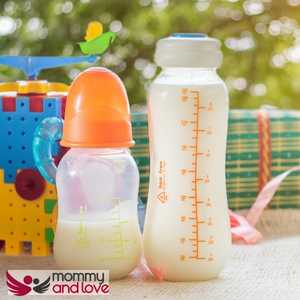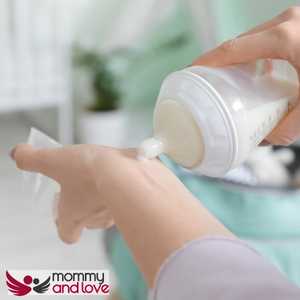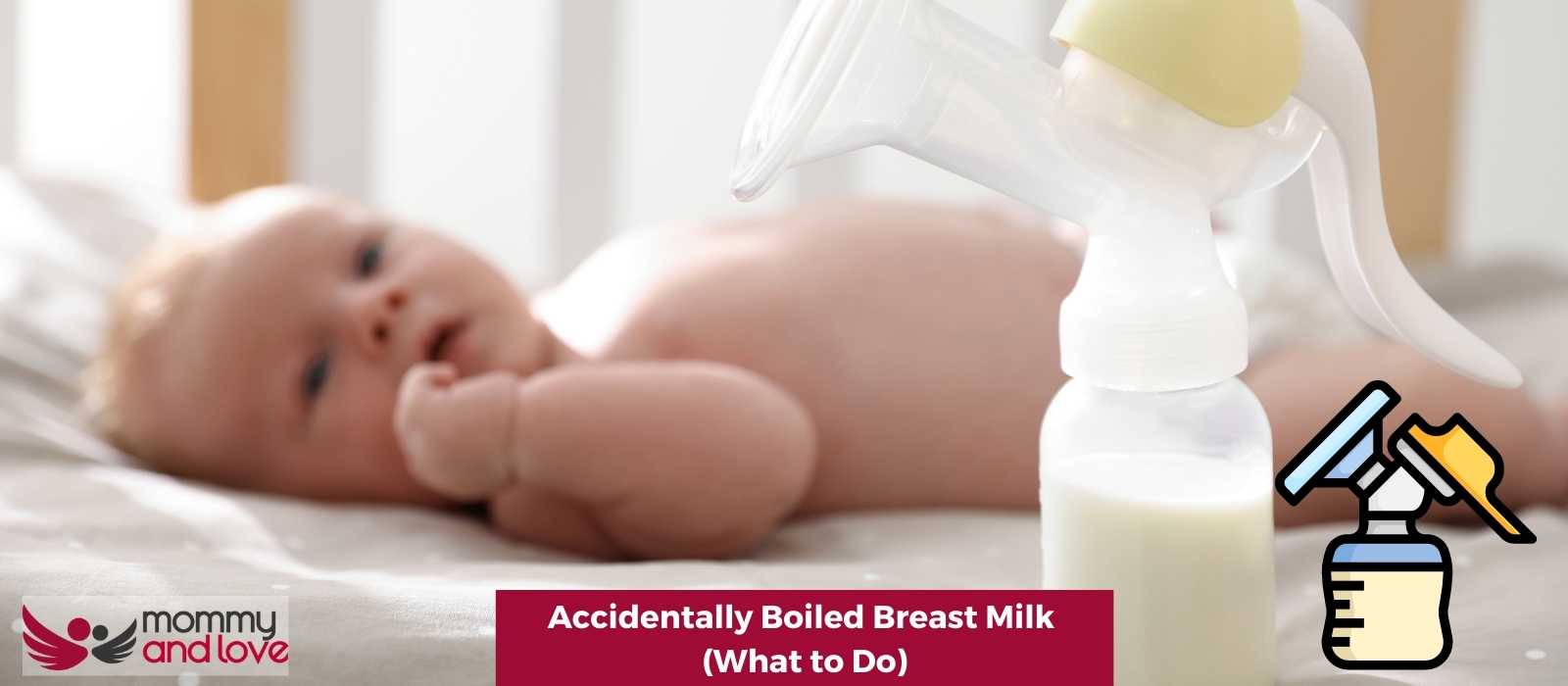Accidentally boiling breast milk is a common mistake. You may have been cooking or heating breast milk in a saucepan, and you forgot about it. Or maybe you were distracted by something else when the stove was on when you went to heat breast milk. The result is that the breast milk boiled or heated breast milk for too long and now has an unpleasant smell or taste.
Who would want to feed their babies with cold breast milk or frozen breast milk? Many moms have difficulty handling breast milk and the result is spoiled breast milk. Boiling breast milk or stored breast milk can kill the nutrients and antibodies it contains, so it’s important to take steps to prevent accidental boiling or overheating breast milk.
By the time breast milk reaches sustained temperatures higher than 50 degrees Celsius, which is hot, but not yet scalding, the rate of breast milk quality deterioration increases significantly.
Can You Overheat Breast Milk?
We won’t beat around the bush—yes, yes you can ruin breastmilk by overheating it. The milk should be just body temperature milk, if the expressed milk has reached boiling point, you may have destroyed nutrients, but it doesn’t necessarily mean the milk is ruined, you’ve just lost many of the beneficial nutrients.
As a once-off accident, as long as the milk is not boiling when you give it to your baby, you’ve just given him one less than perfect meal. But if you are doing this regularly, your baby could be seriously suffering from malnutrition if you are boiling all the goodness away.
We’ve done a full guide to what to do with spoiled breast milk, so never throw away any unused breast milk! Also, don’t panic if your baby has drunk some milk which you think you may have overheated (unless it’s too hot of course!), we’ve done a guide to on what happens if Baby Drinks Spoiled Breast Milk?
How to Warm Breast Milk to Preserve the Nutrients?

We all know that freshly pumped breast milk is best, and if you can give your baby fresh breast milk, then this is ideal.
But, often we have to store breast milk for those times when we are not about. After you have pumped with the breast pump, you can store milk in the fridge or the deep freezer or freezer compartment in freezer bags.
Breast milk should just be warmed to room temperature, it should never be boiled. To prevent overheating, place the bag or bottles in hot tap water and allow it to warm up. This ensures preserving as many of the beneficial nutrients as possible. When you boil, microwave or scald milk you will destroy nutrients and you also risk having hot spots which can burn your baby.
Put the frozen breast milk or refrigerated breast milk in a bowl of warm water. Frozen milk will take longer to thaw out so it’s worth planning in advance to ensure you don’t leave it too late and have to resort to defrosting in the microwave. Planning is key to ensure you get the ideal temperature and keep those protective properties and important nutrients.
All you need is a container of some kind and about 15 minutes for your milk to reach room temperature. If you want it warmer, you can put it under hot boiling water for a few minutes. Running warm water will avoid high heating temperatures.
If you’re looking for an easy way out, though, you can always use a bottle warmer—just follow the directions to be safe!
Checking Breast Milk Temperature

You always need to check the milk before you put it into baby’s mouth or near baby’s skin. Just put a few drops on your arm and check it is body temperature milk.
When it comes to checking the temperature of breast milk, there is the best temperature: 98.6 degrees.
To check the temperature of breast milk, you should use a thermometer. For an accurate reading, you can place the thermometer in your mouth for fifteen seconds.
How Not to Warm Breast Milk?
It can be tricky to warm breast milk without damaging its nutritional content or taste. Here are a few tips to make the process a little easier.
Breast milk is supposed to be WARM, not hot. If you have to warm your unused breast milk, do not use a microwave. It can create hotspots in the bottle that might burn your baby’s skin and mouth.
To prevent overheating breast milk, the best way to warm refrigerated breast milk is to run it under a bowl of warm water until it reaches room temperature. It will not destroy breast milk’s nutritional value in the milk itself.
Never Use Microwave to Warm Breast Milk
Never microwave breast milk! You can’t warm breast milk in a microwave. Microwaving breast milk will destroy the beneficial nutrients in it, and high heating temperatures can kill many of the good bacteria and enzymes that your baby needs for proper digestion and growth.
Instead, use hot water or top hot water to warm your breast milk. Here’s how:
1. Get the frozen milk from the fridge and place it in a bowl of hot water.
2. Let it sit for 10 minutes or until it reaches your desired temperature.
3. Test the temperature on your wrist before feeding it to your baby.
Does Heating Change Breast Milk?
Heating your milk in the microwave or boiling water and putting the bottle in is also a fast way to heat up breast milk but can lead to hot spots that can burn your baby’s skin and destroy nutrients.
The easiest, most straightforward way to warm up breast milk is by placing it in a bowl of hot water or running it under hot tap water, but keep in mind that you should never heat the milk above 120 degrees Fahrenheit. To make sure you don’t go over this with either method, test the temperature before you feed the baby.
If you’re looking to kill bacteria in your breast milk, you can do that by putting the breast milk into a pot of water on the stove and bringing it to a boil. This process is called pasteurization. If you’re going to use this method, make sure you don’t actually leave the milk on the stove for too long—boiling your breast milk will get rid of all the good nutrients in it and give your baby bad nutrition.
So how long should you boil your breast milk? The answer is: only for 15 seconds! Then you can let it cool down and store it for later.
Take Away: What Happens If You Accidentally Boiled Breast Milk
It’s important to follow the best practices when warming breast milk so that you don’t damage its nutrients or heat it up too much. Heating breast milk can be done in a number of ways, but the safest and most effective way is by using hot water to not exceed the boiling point. You can also use a thermometer to check the temperature before you give it to your baby. If it smells or looks funny, though, toss and throw it – spoiled breast milk no longer has the nutrients your baby needs so it’s better to be safe than sorry.

This article was written by Sandra Baker – full time writer and the mother of four amazing kids (including twins!)
She’s also a breastfeeding counselor and has spent years helping new parents learn how to care for their children. When she’s not writing or caring for her children, Sandra likes to spend time reading and taking walks with her husband.




